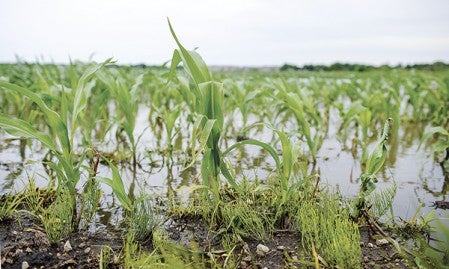Crops sitting better than last year despite recent heavy rains
Published 10:36 am Thursday, June 26, 2014
By Hannah Dillon
Crops are still doing well compared to last year despite heavy rains last week.
Tom Sorenson with Americana Insurance, one of the area’s larger crop insurance agencies, said that last year 30 to 40 percent of crops weren’t planted due to early rains. This year, the rain hit after the crops had been planted.
Sorenson said it looked like this year’s planting season was going to end up like last year’s, but 1 and half weeks of good weather at the end of May opened the door for farmers to plant. After that the weather was looking good, and the rain the area received on June 14 was a timely, needed rain.
However, the rain didn’t stop after that day.
“The problem is the faucet didn’t shut off,” Sorenson said.
Successive storms passed through the area through the following week and dumped almost 7 inches of rain on the crops. Sorenson said he had heard the total was around 10 inches in some areas.
This rain drowned some of the crops that had already been planted, Sorenson said. High winds also knocked some of the corn flat, which put stress on the plants and took some production potential out of the crop.
Sorenson said he also had heard from his clients some reports of hail. It was spotty, and no one area had more or less hail damage than others. The hail didn’t cause any total loss of crops, but Sorenson said he had numerous hail claims.
The question of whether the farmers will replant isn’t completely positive either, according to Sorenson. It would be risky to replant corn at this time, but soybeans could be replanted — if the ground still wasn’t so wet.
However, if the weather cooperates over the next few days, Sorenson said replanting soybeans could be feasible.
For the crops that didn’t drown, they look good, Sorenson said. It is hard to tell how much damage has been done at this point, though, and what happens in the upcoming months will determine the future of this year’s crop.
Last year was the worst year for planting since 1993, Sorenson said. This area hadn’t experienced a loss like last year since then. About 40 percent of crops weren’t planted. Sorenson said that this year, despite all the rain, has been much better.
The key is that this year the plants were in the ground before the rains hit versus planting being delayed because of heavy rains.
In northern Minnesota, many farmers have been claiming prevented planting. This is when the farmer is not able to plant the season’s crops. If the farmer’s loss is more than their guarantee, they can get help from insurance. However, Sorenson emphasized that prevented planting is not an easy way out and that it is much more beneficial for farmers to get their crops in the ground.
Sorenson cautioned that even though the area got a large amount of rain in a short period of time this month, it won’t make up for a summer of timely rains.




